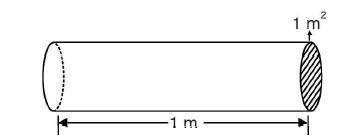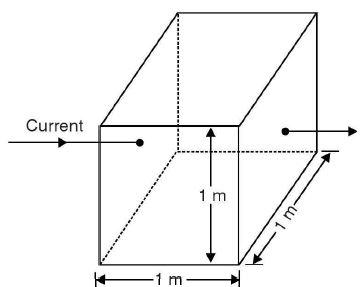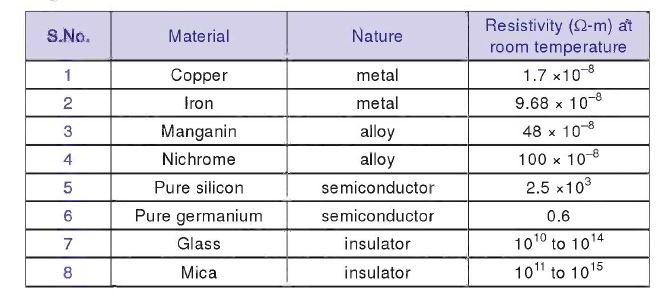Electrical Engineering ⇒ Topic : Specific Resistance or Resistivity
|
|
| Seema
| |
Specific Resistance or Resistivity We have seen above that If 1 = 1 m, a= 1 m2, then, R = p Hence specific resistance of a material is the resistance offered by 1 m length of wire of material having an area of cross-section of 1 m2 [See Fig.(a)]. Figure (a) Specific resistance can also be defined in another way. Take a cube of the material having each side 1 m. Considering any two opposite faces, the area of cross-section is 1 m2 and length is 1 m [See Fig. (b)] i.e. 1= 1 m, a = 1 m2. figure (b) Hence specific resistance of a material may be defined as the resistance between the opposite faces of a metre cube of the material. Unit of resistivity We know Hence the unit of resistivity will depend upon the units of area of cross-section (a) and length (1). (i) If the length is measured in metres and area of cross-section in m2, then unit of resistivity will be ohm-metre (Ω m). (ii) If length is measured in cm and area of cross-section in cm2, then unit of resistivity will be ohm-cm (Ω cm). The resistivity of substances varies over a wide range. To give an idea to the reader, the following table may be referred
The reader may note that resistivity of metals and alloys is very small. Therefore, these materials are good conductors of electric current. On the other hand, resistivity of insulators is extremely large. As a result, these materials hardly conduct any current. There is also an intermediate class of semiconductors. The resistivity of these substances lies between conductors and insulators
| |
|
| |
!! OOPS Login [Click here] is required for more results / answer







